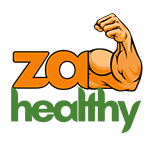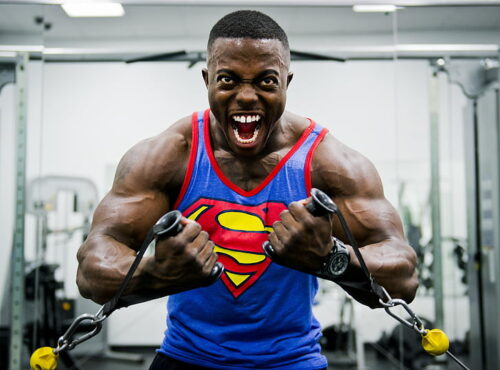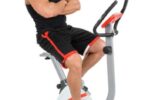Strength training is more than just lifting weights. It’s a way of life that can help you achieve your full potential in every aspect of your life. But what exactly is strength training? How does it benefit you? And how can you get started with a simple and effective program that suits your goals and needs? In this article, we’ll answer these questions and more. We’ll also share some of the best powerlifting programs, grip training exercises, and explosive leg workouts that you can try today.
Let’s get started!
What is strength training?
Strength training is any physical activity that involves using resistance to challenge your muscles and make them stronger. Resistance can come from your own body weight, free weights, machines, bands, or other equipment. The main types of strength training are:
- Muscular hypertrophy: This is the type of strength training that most people associate with building muscle mass. It involves lifting moderate-to-heavy weights for 8-12 repetitions per set, with short rest periods between sets. The goal is to stimulate muscle growth by creating micro-tears in the muscle fibers, which then repair and grow bigger during recovery.
- Muscular endurance: This is the type of strength training that improves your muscles’ ability to sustain exercise for a long period of time. It involves lifting light weights for 15-20 repetitions per set, with little to no rest between sets. The goal is to increase the blood flow and oxygen delivery to the muscles, which enhances their efficiency and stamina.
- Circuit training: This is a form of full-body conditioning that combines strength training with cardio. It involves cycling through various exercises with minimal rest between them, usually targeting different muscle groups. The goal is to burn calories, improve cardiovascular fitness, and increase muscular endurance.
- Maximum muscular strength: This is the type of strength training that focuses on improving your overall strength and power. It involves lifting heavy weights for 1-6 repetitions per set, with long rest periods between sets. The goal is to increase the amount of force that your muscles can produce in a single effort.
- Explosive power: This is the type of strength training that combines strength and speed to enhance your power output. It involves performing fast and explosive movements with light-to-moderate weights or body weight, such as jumps, throws, or sprints. The goal is to improve your ability to perform explosive movements in sports or daily activities.
Depending on your goals, you can choose one or more types of strength training. You can also use different equipment or none at all, depending on what’s available and convenient for you.

What are the benefits of strength training?
Here are some of the main ones:
- It helps you build muscle mass and strength: Strength training stimulates muscle growth by creating micro-tears in the muscle fibers, which then repair and grow bigger during recovery. This process increases your muscle mass and strength over time, which can improve your appearance, confidence, and performance.
- It helps you lose fat and maintain a healthy weight: Strength training increases your metabolism by boosting the amount of calories that you burn at rest and during exercise. This helps you create a calorie deficit, which is necessary for losing fat. Strength training also preserves your muscle mass while you lose fat, which prevents your metabolism from slowing down and helps you maintain a lean and toned physique.
- It helps you improve your bone health: Strength training puts stress on your bones, which stimulates them to increase their density and strength. This helps prevent osteoporosis, that causes your bones to become weak and brittle. Strength training also protects your joints from injury by strengthening the muscles, ligaments, and tendons around them.
- It helps you manage or prevent chronic diseases: Strength training has been shown to improve various aspects of chronic disease management or prevention. It can help lower blood pressure, blood sugar, cholesterol, and inflammation levels, and enhance immune function.
- It helps you enhance your mood and mental health: Strength training releases endorphins, which are natural chemicals that make you feel good. It also reduces, anxiety and depression. Strength training can also improve your self-esteem, confidence, body image, sleep quality, memory, and cognitive function.
As you can see, strength training has many benefits for your overall well-being. But how can you get started with a simple and effective program that suits your goals and needs?.
How to get started with strength training
If you’re new to strength training, you may feel overwhelmed by the amount of information and options available. But don’t worry, getting started is easier than you think. Here are some basic steps to follow:
- Check with your doctor: If you have a chronic condition, or if you’re older than 40 and you haven’t been active recently, check with your doctor before starting a strength training or aerobic fitness program. They can advise you on any precautions or modifications that you may need to take.
- Choose your goal: What do you want to achieve with strength training?, Build muscle, lose fat, improve your health, or boost your performance? Your goal will determine the type, frequency, intensity, and duration of your strength training sessions. For example, if you want to build muscle, you need to do heavier weights and longer rest periods than if you want to improve your endurance.
- Choose your equipment: What kind of equipment do you have access to or prefer to use? You can do strength training with your own body weight, free weights, machines, bands, or other equipment. For example, body weight exercises are convenient and versatile, but they may not provide enough resistance for some muscles or goals. Free weights are effective and adaptable, but they require more skill and safety precautions than machines. Bands are inexpensive and portable, but they may not offer enough tension or variety for some exercises. Machines are easy and safe to use, but they may limit your range of motion or natural movement patterns.
- Choose your exercises: What kind of exercises do you want to do? You can choose from a wide range of exercises that target different muscle groups and movements. A good way to start is to choose one exercise for each of the following: upper body push like chest press and pushup, upper body pull like row, pullup, lower body push like squat, lunge, lower body pull like deadlift, core like plank and crunch, and total body like burpee and kettlebell swing. These exercises will cover most of the major muscles and movements in your body. You can also add some isolation exercises for specific muscles that you want to emphasize or improve (e.g., bicep curl, tricep extension).
- Choose your sets, reps, and rest: How many sets and reps do you want to do for each exercise? How long do you want to rest between sets and exercises? These variables will depend on your goal and the type of strength training that you’re doing. As a general rule of thumb, you can follow these guidelines:
- For muscular hypertrophy: Do 3-4 sets of 8-12 reps per exercise, with 60-90 seconds of rest between sets.
- For muscular endurance: Do 2-3 sets of 15-20 reps per exercise, with 30-60 seconds of rest between sets.
- For circuit training: Do 1 set of 10-15 reps per exercise, with little to no rest between exercises. Repeat the circuit 2-4 times, with 1-2 minutes of rest between circuits.
- For maximum muscular strength: Do 3-5 sets of 1-6 reps per exercise, with 2-5 minutes of rest between sets.
- For explosive power: Do 2-4 sets of 3-8 reps per exercise, with 2-4 minutes of rest between sets.
These are just general guidelines that you can adjust according to your fitness level and progress. The key is to challenge yourself without compromising your form or safety.
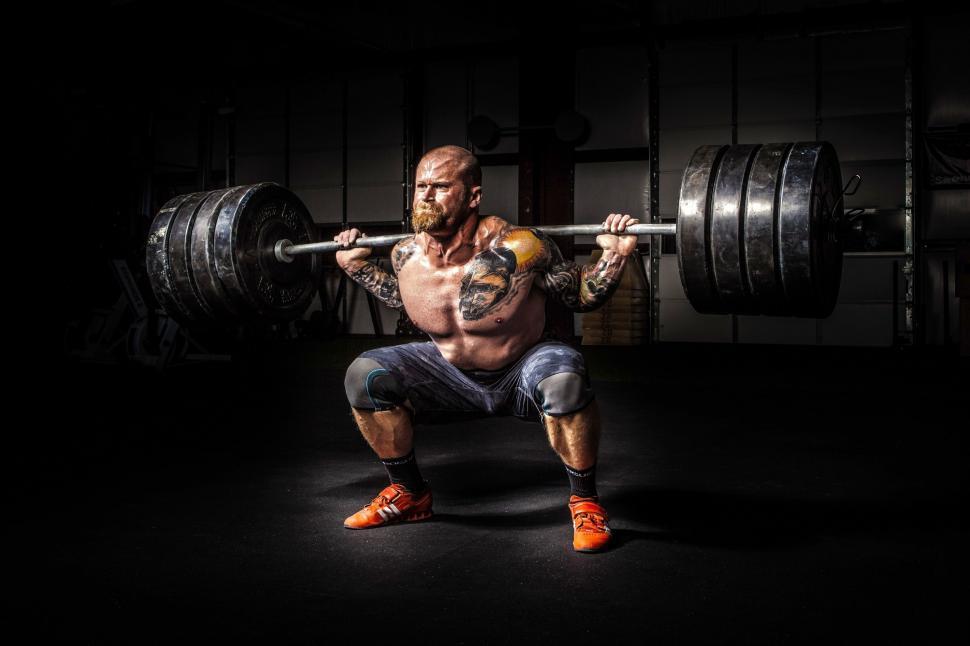
Some examples of powerlifting programs
Powerlifting is a type of strength training that focuses on improving your maximum muscular strength in three main lifts: the squat, the bench press, and the deadlift. Powerlifting programs usually involve low reps (1-6) and heavy weights (80-100% of your one-rep max) for these lifts. Here are some examples of popular powerlifting programs that you can try:
- 5×5: This is a simple and effective program that involves doing five sets of five reps for each lift. You can do this program three times per week, alternating between two workouts: Workout A (squat, bench press, row) and Workout B (squat, overhead press, deadlift). You can increase the weight by a small amount (2.5-5 kg) every week or every other week.
- 5/3/1: This is a more advanced program that involves doing four cycles of four weeks each. Each cycle consists of three main workouts per week: Workout 1 (squat), Workout 2 (bench press), and Workout 3 (deadlift). Each workout follows a different rep scheme for the main lift: Week 1 (5 reps), Week 2 (3 reps), Week 3 (5/3/1 reps), and Week 4 (deload). You can add some accessory exercises for your weak points or goals after the main lift. You can increase the weight by a small percentage (2.5-10%) every cycle.
- Westside Barbell: This is a highly customizable and flexible program that involves doing four workouts per week: two for the upper body and two for the lower body. Each workout consists of a main lift, a supplemental lift, and some accessory exercises. The main lifts are divided into two categories: max effort and dynamic effort. Max effort lifts are done with heavy weights and low reps (1-3) to improve your strength. Dynamic effort lifts are done with light weights and high speed (8-12) to improve your power. You can vary the exercises, sets, reps, and weights for each workout according to your needs and preferences.
These are just some examples of powerlifting programs that you can try. You can also create your own program or follow other programs that suit your goals and needs. The important thing is to be consistent, progressive, and safe with your training.
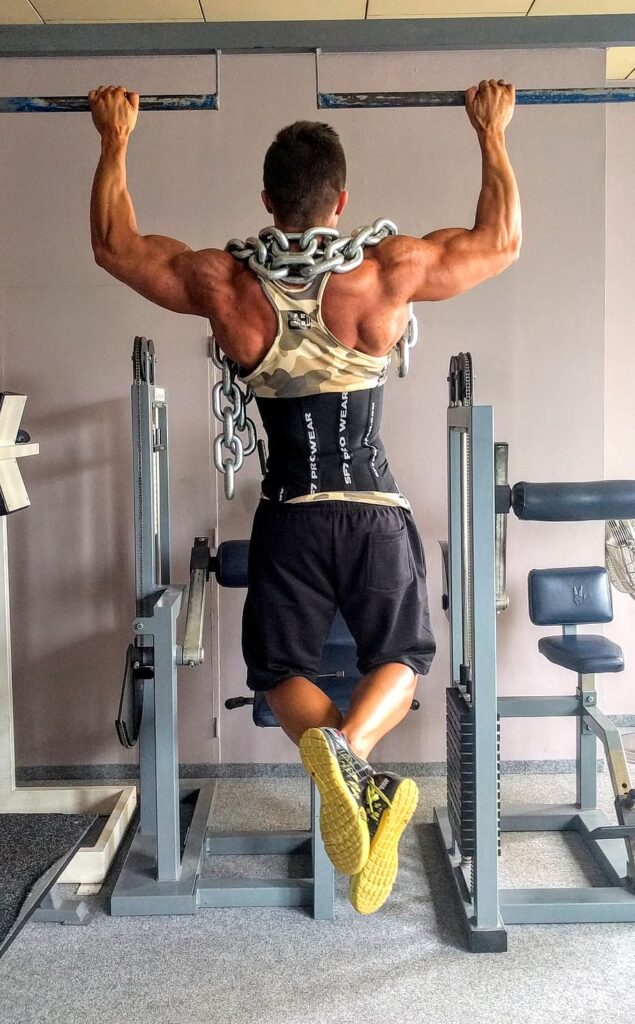
Some examples of grip training exercises
Grip training is a type of strength training that focuses on improving your grip strength, which is the ability to hold, squeeze, or manipulate objects with your hands. Grip strength is important for many sports and activities, such as climbing, arm wrestling, martial arts, or carrying heavy bags. Grip training exercises usually involve using specialized equipment such as hand grippers, thick bars, pinch blocks, or wrist rollers. Here are some examples of grip training exercises that you can try:
- Hand gripper workout: Hand grippers are devices that have two handles connected by a spring or a coil. You squeeze the handles together to close the gripper and release them to open it. Hand grippers come in different sizes and resistances, so you can choose one that matches your level and goal. A simple hand gripper workout involves doing three sets of as many reps as possible with each hand, resting one minute between sets. You can do this workout two or three times per week, increasing the resistance or reps as you get stronger.
- Arm wrestling workout: Arm wrestling is a sport that involves using your arm strength and technique to pin your opponent’s arm down on a table. Arm wrestling requires a strong grip, forearm, bicep, and shoulder strength. An arm wrestling workout involves doing various exercises that target these muscles, such as wrist curls, hammer curls, reverse curls, shoulder presses, lateral raises, and rows. You can do this workout two or three times per week, doing three sets of 8-12 reps per exercise, resting one minute between sets. You can also practice arm wrestling with a partner or a machine to improve your skills and confidence.
- Weightlifting training : Weightlifting is a sport that involves lifting heavy weights overhead in two movements: the snatch and the clean and jerk. Weightlifting requires a strong grip to hold the barbell securely and prevent it from slipping or rotating in your hands. Weightlifting training involves doing various exercises that improve your grip strength and technique for these lifts, such as snatch grip deadlifts, clean pulls, snatch high pulls, hang snatches, hang cleans, front squats, overhead squats, and jerks. You can do this workout three or four times per week, doing three sets of 1-5 reps per exercise, resting two minutes between sets. You can also use straps or chalk to enhance your grip on the barbell.
These are just some examples of grip training exercises that you can try. You can also create your own exercises or follow other exercises that suit your goals and needs. The important thing is to be consistent, progressive, and safe with your training.
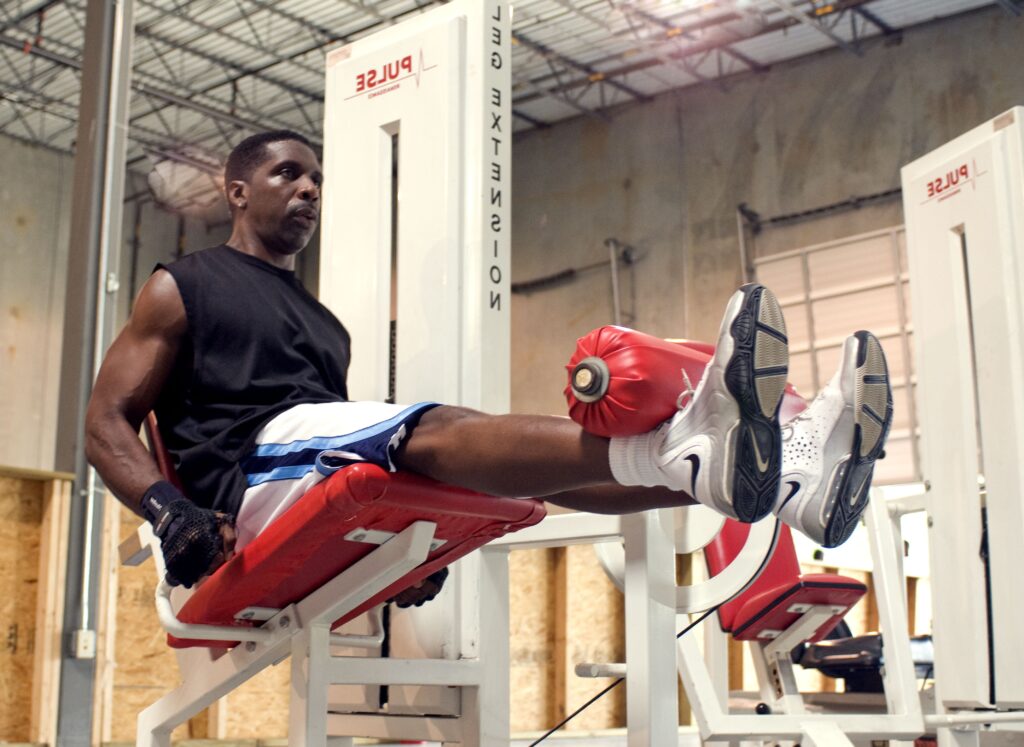
Some examples of explosive leg workout
Explosive leg workouts are a type of strength training that focuses on improving your leg power, which is the ability to generate force quickly with your legs. Leg power is important for many sports and activities that involve jumping, sprinting, kicking, or changing direction quickly. Explosive leg workouts usually involve doing fast and explosive movements with your legs, such as jumps, sprints, or plyometrics. Here are some examples of explosive leg workouts that you can try:
Leg workout for runners: Runners need strong and powerful legs to run faster and longer without getting tired or injured. A leg workout for runners involves doing various exercises that improve your leg strength and endurance for running, such as squats, lunges, step-ups, calf raises, and leg curls. You can also add some explosive exercises that improve your leg power and speed for running, such as box jumps, sprint intervals, hill sprints, or bounding. You can do this workout two or three times per week, doing three sets of 10-15 reps per exercise, resting one minute between sets. You can also vary the intensity, distance, and terrain of your running sessions to challenge your legs in different ways.
- Powerlifting workout: Powerlifters need strong and powerful legs to lift heavy weights in the squat and the deadlift. A powerlifting workout involves doing various exercises that improve your leg strength and power for these lifts, such as back squats, front squats, sumo deadlifts, conventional deadlifts, and Romanian deadlifts. You can also add some explosive exercises that improve your leg speed and explosiveness for these lifts, such as box squats, speed squats, speed deadlifts, or jump squats. You can do this workout two or three times per week, doing three sets of 1-6 reps per exercise, resting two to five minutes between sets. You can also use bands or chains to add resistance or variation to your lifts.
- Traditional strength training: Traditional strength training is a type of strength training that focuses on improving your overall strength and fitness. A traditional strength training workout involves doing various exercises that target different muscle groups and movements in your body, such as chest press, row, shoulder press, curl, tricep extension, leg press, leg extension, and leg curl. You can also add some explosive exercises that improve your leg power and agility for general fitness, such as squat jumps, lunge jumps, skater jumps, or lateral hops. You can do this workout two or three times per week, doing three sets of 8-12 reps per exercise, resting one minute between sets. You can also use different equipment or none at all to vary your workout.
These are just some examples of explosive leg workouts that you can try. You can also create your own workouts or follow other workouts that suit your goals and needs. The important thing is to be consistent, progressive, and safe with your training.
Conclusion
Strongman training is a great way to unleash your inner power and achieve your full potential in every aspect of your life.
In this article, we’ve shared some of the basics of strength training, such as what it is, how it benefits you, and how to get started with a simple and effective program that suits your goals and needs. We’ve also shared some of the best powerlifting program for beginners, grip training exercises, and explosive leg workout that you can try today.
We hope you’ve found this article helpful and informative. If you have any questions or comments, feel free to leave them below. And if you’re ready to take your strength training to the next level, check out our website for more tips and resources.
Happy lifting! 💪
